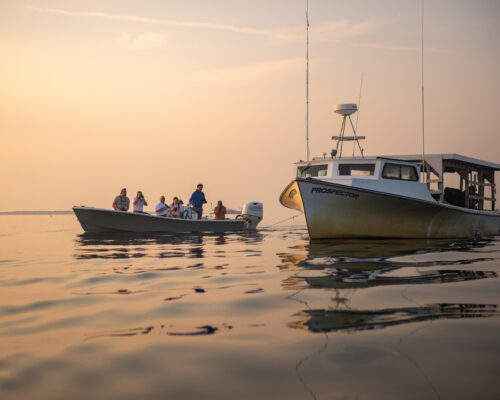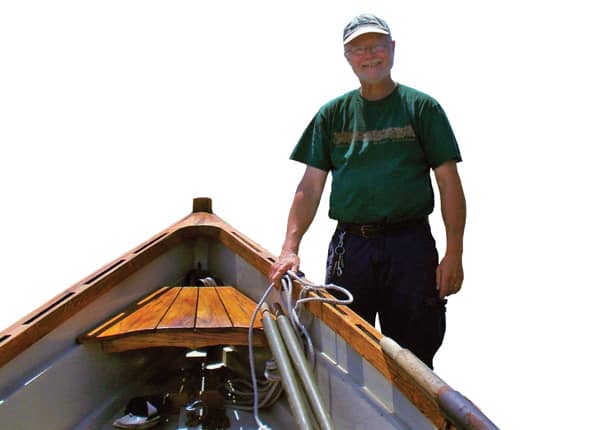As Maryland’s founding county, St. Mary’s County is awash in 17th-century history. It’s a place where visitors can see where and how the state’s first colonists lived. But colonial relics aren’t the only antiquities you’ll encounter.
On a brisk fall afternoon, diners at Morris Point Restaurant on Canoe Neck Creek looked up from their crabcake sandwiches in wonder. A peculiar wooden ship with a single, barren mast was advancing steadily toward them. Propelled by a dozen oarspersons dressed like refugees from Middle Earth, the vessel lurched nearer, then turned and headed for the restaurant’s dock. The crew—men, women and two sixth-graders, some wearing helmets and carrying axes—tied up, disembarked and piled into the dining room.
“Are you pirates?” asked one puzzled diner. “Sort of,” replied a bushy-bearded crewman sporting linen trousers, a pumpkin-colored tunic and matching skullcap. “We’re Scandinavian pirates.”
The Longship Company, a group of Viking maritime enthusiasts, had arrived, prompting their usual share of double takes and questions.
The nonprofit educational group holds bi-weekly voyages on Canoe Neck Creek (their home) and St. Clements Bay. Years ago, I joined this jolly band aboard their previous vessel, berthed on Solomons’ Back Creek in Calvert County. Their hailing port has changed but their mission hasn’t: teach Viking history and culture by reliving the 8th to 11th centuries on reconstructions of longships, pointy-ended, square-rigged warships designed for nimble, shallow-water raiding.

The Longship Company’s current flagship is the 39-foot Sae Hrafn(“say her-RAH-fen”), Norse for sea raven. Constructed in California in the same manner as lapstrake (clinker-built) longships of old, she is made of cedar and oak. Launched in 2005, Sae Hrafn is slightly bigger than her predecessor, Fyrdraca (now semi-retired to a Missouri lake), but more stable and maneuverable.
With her dragon figurehead and cobalt-blue sail, Sae Hrafn cuts a dashing profile, particularly on dress-up voyages like this, when the crew wears handmade period clothing. Longship Company vessels have appeared in television re-enactments on the History Channel, and last year hosted a New England group that teaches authentic Viking fighting techniques.
Members enjoy sharing their obsession with the uninitiated. A 2016 YouTube video conveys the group’s lighthearted-but-instructive approach. In “A Viking Striptease,” founding member and heart-surgery survivor Bruce Blackistone shows off his Viking wardrobe and weaponry, explaining each item’s purpose as he disrobes. (Fear not, it’s a PG production; the scar-squeamish are cautioned.)
Prior to the group’s three- to four-hour excursions, an officer briefs the crew on standard commands and rules of the voyage. Safety will supplant authenticity; the ship carries PFDs under the thwarts and a marine radio that’s stashed inside a runic-carved wooden chest. Newcomers get a short rowing lesson, after which three watches are assigned to divide rowing duties into 40-minute shifts. On this day, boatswain Marc Blaydoe led their rhythmic rowing chant: A-Viking I
will go me lads, a-Viking I will go! When they aren’t manning 12-foot-long oars, crewmembers get to handle the sail and, when well behaved, even the steerboard, the ship’s crude plank rudder.
After finishing their beverages at the restaurant and flashing some Viking bling (Celtic cross and Thor’s hammer amulets) to curious patrons, the crew reassembled for the return voyage. Fortunately, Njord, Norse god of the sea, bestowed fair winds. Shortly after pushing off, they raised Sae Hrafn’s sail and glided homeward. Learn more at www.longshipco.org.
— Marty LeGrand



